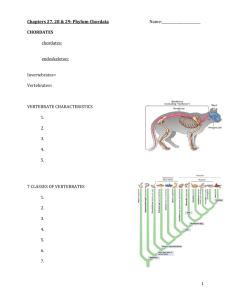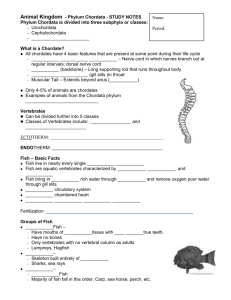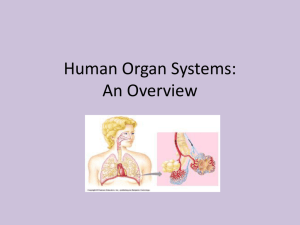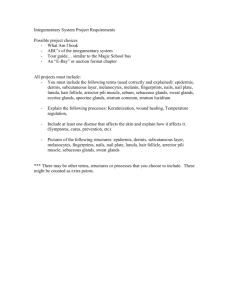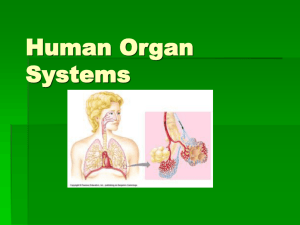Phylum Chordata
advertisement
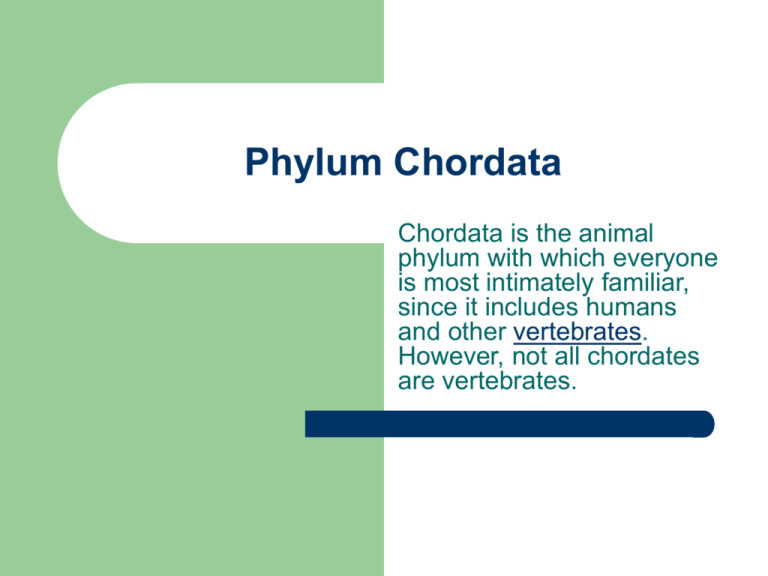
Phylum Chordata Chordata is the animal phylum with which everyone is most intimately familiar, since it includes humans and other vertebrates. However, not all chordates are vertebrates. Examples of CHORDATA 1. 2. 3. 4. Urochordates Tunicates Cephalochordates Amphioxus Hemichoradtes saw worms Vertebrates Characteristics of CHORDATA All chordates have the following features at some point in their life (in the case of humans and many other vertebrates, these features may only be present in the embryo): 1. 2. 3. 4. pharyngeal slits - a series of openings that connect the inside of the throat to the outside of the "neck". These are often, but not always, used as gills. Dorsal nerve cord - a bundle of nerve fibers which runs down the "back". It connects the brain with the lateral muscles and other organs. notochord - cartilaginous rod running underneath, and supporting, the nerve cord. post-anal tail - an extension of the body past the anal opening. Characteristics of Vertebrates Vertebrates have the same characteristics as all other chordates but they also have the additional and distinguishing characteristic of having a back bone or vertebral column. Classes of Vertebrates 1. 2. 3. 4. 5. 6. 7. Agnatha = Jawless fish Cartilaginous fish Bony Fish Amphibians Reptiles Birds Mammals Agnatha = Jawless fish 1. 2. 3. Cartilaginous Skelton No hinge in Jaw Exposed gill slits Cartilaginous Fish 1. 2. 3. 4. 5. Cartilaginous Skelton Hinge in Jaw Tremendous chemo sensors Scales Internal Fertilization for sharks Bony Fish 1. 2. 3. 4. 5. 6. 7. Terminal mouth Skeleton of bone for protection Flap (operculum) covering the gills Swim bladder The skin has many mucus glands and is usually adorned with dermal scales Their jaws are well developed, They have a two-chambered heart fertilization is usually external. Amphibians 1. 2. 3. 4. 5. 6. 7. First group to move to land Land locomotion Moist, glandular skin with no scales Hearts have three chambers (two auricles and one ventricle) and both oxygenated and deoxygenated blood pass through the Ventricle. Respiration is by the skin, lining of the mouth, gills, and/or lungs, require water for reproduction Fertilization may be internal or external and most are oviparous Amphibians 2 main groups 1. 2. Tailed: Tailless: 1 minor group Legless salamanders & newts frogs & toads Reptiles 1. 2. 3. 4. 5. 6. 7. 8. Scaly skin to prevent water loss Concentrated urine reduces water loss Fertilization is internal reducing reliance on water. Leathery cover on eggs helps prevent water loss Lungs for respiration Three chambered heart with partially divided ventricle. Crocodiles & Alligators have 4 chambered heart. Some exhibit a degree of endothermy Reptiles 3 groups 1. Crocodiles & alligators 2. Turtles & Tortoises 3. Snakes & lizards Poisonous snakes & non-poisonous snakes Poisonous snakes come in 2 types 1. 2. Neurotoxins Hemotoxins Exothermic Reptiles AVES 1. 2. 3. 4. 5. 6. 7. 8. Feathers Very Concentrated urine reduces water loss Shelled eggs helps prevent water loss & Protect Four chambered heart Endothermic (warm blooded) Fertilization is internal reducing reliance on water. Hollow bones Enlarged breast bone Mammals Three main groups 1. Monotremes 2. Lay eggs (External development) Mammary Glands, hair Marsupials (Kangaroo, Opossum) 3. (spiny ant eater & duck billed Platypus) Pouches (Partial internal development) Mammary Glands, hair Placental (most mammals) Womb (full internal development) Mammary Glands, hair Mammals Characteristics 1. 2. hair mammary glands Their integument is complex and has many glands used for a variety of purposes: thermoregulation and excretion (sweat glands), communication (scent glands), care of the hair and skin (sebaceous oil glands), and for feeding of the young (mammary glands). They are thermic and have relatively high rates of metabolism. In keeping with their higher metabolic rates, adaptations for efficient feeding include heterodont teeth in most species and a secondary palate to separate the respiratory and food passages (so they can breathe and chew at the same time). The circulatory systems are efficient, and they have a four-chambered heart with separate pulmonary and systemic circulations. Their brains are highly developed, fertilization is internal, and most have placental attachment of the young.
